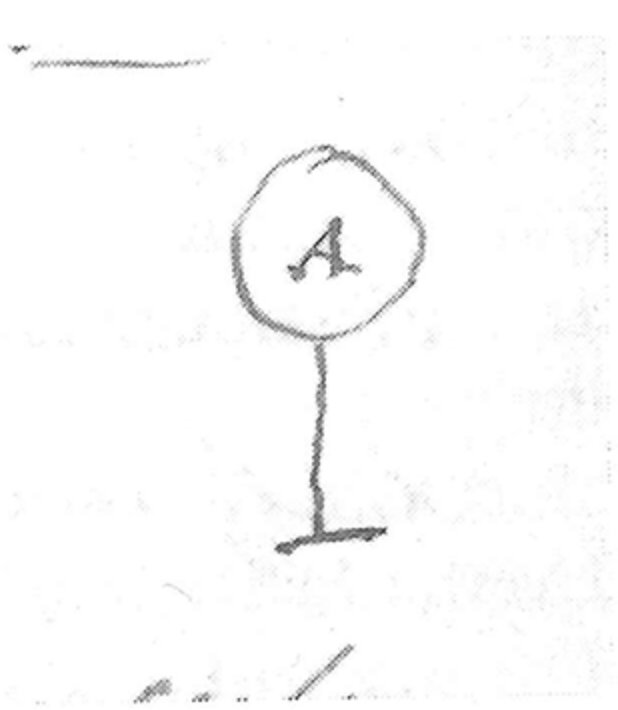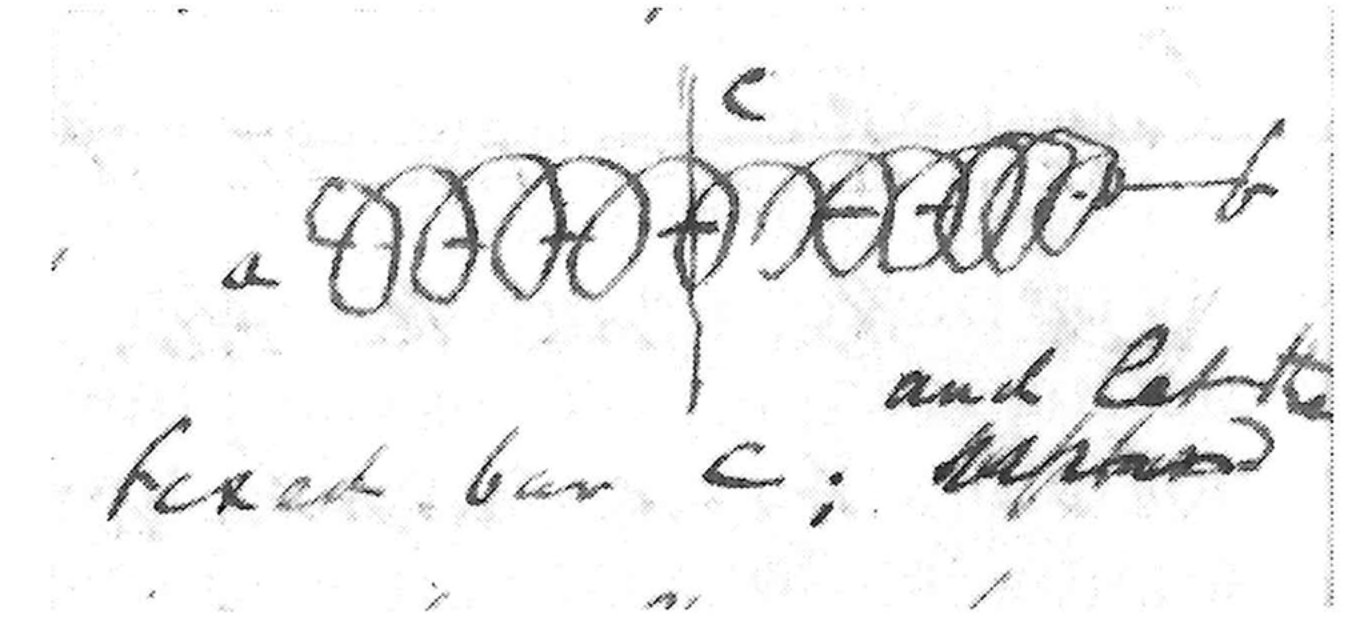William Snow Harris to Faraday 27 March 1858
6 Windsor Villas | Plymouth. 27 March 1858
My dear Faraday
You have always been so kind and considerate toward me that I have really very conscientious scruples, in venturing upon this communication which I fear must to some extent intrude on your valuable time and attention but the fact is I am now seriously engaged on what I hope may be at least a useful Work to be entitled “Statical and Dynamical Electricity”1 and which will comprise I hope the existing state of Electrical Philosophy to the present time under an original form & containing something more than is constantly repeated over & over again in Works of this kind - I have now a very completely fitted apartment with Instruments for daily investigation - some good may be done in this way and future times will judge of the real merits of my Work. This also is much better than vanishing discussions of a controversial kind[.]
- Now it is most important to me to be assured that I fully & clearly comprehend all your advances in your immortal Work “Experimental Researches” which I am ever studying - it is really very difficult to say what questions bearing on Electrical force it does not treat.-
When you say 1177 “that it is impossible to charge a portion of matter with one Electrical force independently of the other”2 I suppose you mean to say that the opposite force always appears somewhere - or is always called up: now I want to avoid collision with this view & the common notion that an insulated conductor may be electrified either positively or negatively[.] When I throw sparks from the positive Conductor of the
 Elec. Machine upon the Insulated metal Ball A may it not be said to remain in a certain sense charged with one of the Electrical forces? - can we say that the opposite force is at the same time also called up on this positively electrified Ball A?
Elec. Machine upon the Insulated metal Ball A may it not be said to remain in a certain sense charged with one of the Electrical forces? - can we say that the opposite force is at the same time also called up on this positively electrified Ball A?
As all charge is necessarily determined to the Surface - it seems a delusion to talk of charging the Ball A itself at all. I believe you agree in the Idea that the Ball is the mere terminating or beginning of that peculiar condition of the Intervening dielectric medium external to it.- I should imagine that the depth of the charge whatever it be upon the surface of the Ball is infinitely small yet it has certainly possession of the metallic particles - and there is a stratum of dielectric particles also outside it charged with the same Electricity - this we see by Franklins3 Experiment with the Leyden Jar4 and moveable coatings moreover you can not easily deprive the Metal of this charge for if an Electrified Ball be whirled round in the Air with any Velocity by means of a silk line - still the charge remains - so I think the Metal must hold some of the Charge as Metal - and probably by attractive force for the Electrical agency[.] Then again we have the outer stratum acting sensibly through the medium around it. Thus if we apply metallic discs ab
 to a dry Glass disc abc one on each side and charge a in the usual way b being for the time connected with the Earth - remove the charged discs ab by the insulators mn - each will be found Electrified - but one + the other minus - now the glass disc itself shows the Electricity of the charged side a every where the charge left under disc a upon the glass acts freely upon an Electrometer through the Glass and is radiated as it were from the opposite surface - what should we say - supposing an objector were to remark upon the Theory that metal disc a charged positively ought to induce negative Electricity upon the Glass beneath it - and so we should find negative not positive Elecy. upon the glass - In any new work on this subject (which is greatly wanted) the whole form of expression as to language requires to be altered and we must study to adapt description by approximate terms to the real state of things taken in all their generality[.] I should never for example talk of Electrical Fluids but rather of Electrical force - or of the charging of Metallic Balls or other Conductors with Electricity as if the whole mass were independently affected &c &c
to a dry Glass disc abc one on each side and charge a in the usual way b being for the time connected with the Earth - remove the charged discs ab by the insulators mn - each will be found Electrified - but one + the other minus - now the glass disc itself shows the Electricity of the charged side a every where the charge left under disc a upon the glass acts freely upon an Electrometer through the Glass and is radiated as it were from the opposite surface - what should we say - supposing an objector were to remark upon the Theory that metal disc a charged positively ought to induce negative Electricity upon the Glass beneath it - and so we should find negative not positive Elecy. upon the glass - In any new work on this subject (which is greatly wanted) the whole form of expression as to language requires to be altered and we must study to adapt description by approximate terms to the real state of things taken in all their generality[.] I should never for example talk of Electrical Fluids but rather of Electrical force - or of the charging of Metallic Balls or other Conductors with Electricity as if the whole mass were independently affected &c &c
In reply to Dr Hare5 you put the case of 3 Bodys A B C 6

A is directly + originally
B + on one surface and - on the other
C - you say.
I think we must consider C as a polar charge also in a certain sense - If connected with the Ground the whole is but another Conductor and what may be called the positive force must exist in C at an infinite distance as If its extension were limited thus

but the + of C is with unlimited extension a vanishing quantity[.]
So again the charge upon A is disturbed by reaction of B placing its two extremitys on somewhat dissimilar plates - we might have an arrangement such as to bring the distant force of n into a neutrality or even to pass that limit in which case A would be polarly charged.
As you have defined the case in your reply to Dr Hare it is all well enough. I had much correspondence with some French Philosophers relative to Conduction across a vacuum & your notion of considering forces only as mere force without taking into the account solid indivisible Atoms - you are aware that my little unpretending Work has been Translated into French by M. Garnault7 Professor of Physics à l’Ecole navale à Brest - under the Title of “Lecons Elementaire D’Electricite”8 - They have much difficulty in conceiving all this on the other side of the Water and I had hard work to explain to them what we were to really understand by your Theory[.] It may appear silly to many persons - but I can not see what mere space or distance has to do with the question. If two Bodys are so circumstanced as to have nothing between them - they must be considered for all practical purposes as touching each other. Thus Body A and mere space a and Body B
 would Electrically considered be as one Body AB and the whole
would Electrically considered be as one Body AB and the whole
 would suffer Inductive charge from a charged Body C
would suffer Inductive charge from a charged Body C
 in each case alike.- With respect to positive & negative Electricity - I believe the real difference to consist in the operation of the same force in different ways. Take a Spiral Spring ab
in each case alike.- With respect to positive & negative Electricity - I believe the real difference to consist in the operation of the same force in different ways. Take a Spiral Spring ab
 at rest with a central fixed bar c; and let the ends ab be connected through the Spring by a cord ba - extend the cord at b in direction ab the result will be the extension of the Spring in direction cb and compression in ac thus
at rest with a central fixed bar c; and let the ends ab be connected through the Spring by a cord ba - extend the cord at b in direction ab the result will be the extension of the Spring in direction cb and compression in ac thus
 If we allow the Spring to react or operate by expansion b reacts by contraction - I call the extremity b negative force, extremity a positive force if you like. I think opposite Electricitys have some analogy to this-
If we allow the Spring to react or operate by expansion b reacts by contraction - I call the extremity b negative force, extremity a positive force if you like. I think opposite Electricitys have some analogy to this-
Do you know any case of friction in which Amber gives positive Electricity?
always yours | W.S. Harris
Michael Faraday Eqr. LLD. FRS &c
Bibliography
FARADAY, Michael (1838a): “Experimental Researches in Electricity. - Eleventh Series. On Induction”, Phil. Trans., 128: 1-40.
FARADAY, Michael (1840): “An Answer to Dr. Hare's Letter on certain Theoretical Opinions”, Phil. Mag., 17: 54-65.
HARRIS, William Snow (1857): Leçons élémentaires d'Electricité, ou exposition concise des principes généraux d'électricité et de ces applications Paris
HARRIS, William Snow (1867): A Treatise on Frictional Electricity, In Theory and Practice, London.
HEILBRON, John L. (1979): Electricity in the 17th and 18th Centuries: A Study of Early Modern Physics, Berkeley.
Please cite as “Faraday3405,” in Ɛpsilon: The Michael Faraday Collection accessed on 30 April 2024, https://epsilon.ac.uk/view/faraday/letters/Faraday3405